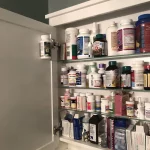Prescription Drug Abuse: Warning Signs and Prevention Tips

According to the National Institute on Drug Abuse, prescription drug abuse is the use of a medication without a prescription, in a way other than prescribed, or for the experience or feeling it causes. It can lead to addiction, overdose, and even death.
Prescription drug abuse is a growing problem in many countries, including the United States. It is estimated that about 18 million people in the U.S. have misused prescription drugs at least once in the past year, and many of them suffer from addiction. Prescription drugs are commonly prescribed to treat various medical conditions, including pain, anxiety, depression, and sleep disorders. However, when these drugs are used in ways other than prescribed, they can be highly addictive and even dangerous.
Prescription drug abuse occurs when people use prescription drugs in ways other than intended, such as taking higher doses than prescribed, using drugs that were not prescribed to them, or taking drugs for non-medical reasons. This can lead to a variety of health problems, including addiction, overdose, and even death. Prescription drug abuse can also lead to legal problems, such as drug-related crimes, and social problems, such as job loss and relationship issues.
As a family member or friend of someone who is taking prescription medication, it’s important to be aware of the warning signs of prescription drug abuse. Here are five common warning signs:
1. Changes in behavior and mood: One of the most common warning signs of prescription drug abuse is changes in behavior and mood. Individuals who abuse prescription drugs may exhibit symptoms such as increased aggression, irritability, and anxiety. They may become agitated or even violent, especially when they are unable to obtain the medication they desire.
2. Neglecting responsibilities: People who abuse prescription drugs may neglect their responsibilities at work, school, or home. They may miss important appointments, forget to pay bills, or perform poorly in their jobs or studies. They may also engage in risky behaviors, such as driving under the influence of drugs.
3. Financial problems: Prescription drug abuse can be expensive, and people who abuse these drugs may struggle with financial problems. They may spend excessive amounts of money on prescription medications or resort to stealing or other illegal activities to obtain them. As a result, they may fall behind on rent or mortgage payments, struggle to pay bills, or even become homeless.
4. Changes in appearance: Prescription drug abuse can cause changes in appearance, such as weight loss, skin problems, and dental problems. People who abuse prescription drugs may experience rapid weight loss or gain, develop acne or other skin problems, or experience dental decay and gum disease.
5. Social isolation: People who abuse prescription drugs may become socially isolated and withdraw from friends and family. They may spend more time alone or with other people who abuse drugs, and they may avoid social situations that do not involve drug use.
Most commonly Abuse Prescription Drug
Prescription drug abuse can occur with any medication that has a potential for abuse, but there are certain classes of drugs that are most commonly abused. These include:
1. Opioids: Opioids are a class of drugs that are commonly prescribed for pain management. They include medications such as oxycodone, hydrocodone, and fentanyl. Opioids are highly addictive and can cause a range of side effects, including respiratory depression, sedation, and nausea.
2. Stimulants: Stimulants are a class of drugs that are commonly prescribed to treat attention deficit hyperactivity disorder (ADHD) and narcolepsy. They include medications such as Ritalin, Adderall, and Dexedrine. Stimulants can cause a range of side effects, including increased heart rate, anxiety, and insomnia.
3. Benzodiazepines: Benzodiazepines are a class of drugs that are commonly prescribed to treat anxiety and sleep disorders. They include medications such as Xanax, Valium, and Ativan. Benzodiazepines are highly addictive and can cause a range of side effects, including sedation, dizziness, and confusion.
4. Sedatives: Sedatives are a class of drugs that are commonly prescribed to treat anxiety and sleep disorders. They include medications such as Ambien, Lunesta, and Sonata. Sedatives can cause a range of side effects, including sedation, dizziness, and impaired coordination.
5. Antidepressants: Antidepressants are a class of drugs that are commonly prescribed to treat depression and anxiety. They include medications such as Prozac, Zoloft, and Lexapro. While they are not typically abused for their psychoactive effects, some people may misuse antidepressants in an attempt to experience euphoria or other effects.
It is important to note that any prescription medication can be abused, regardless of its intended use or classification. Therefore, it is important for individuals to use all prescription medications as directed by their healthcare provider and to monitor for any signs of abuse or misuse.
Prevention Of Prescription Drug Abuse
Prevention of prescription drug abuse starts with proper education and awareness. People need to understand the dangers of prescription drug abuse and how to use prescription drugs safely. Doctors and pharmacists can help prevent prescription drug abuse by properly educating their patients about the risks and benefits of prescription drugs and by closely monitoring their patients for signs of abuse.
There are also several strategies that individuals and families can use to prevent prescription drug abuse. These include:
1. Proper medication storage: Prescription drugs should be stored in a secure location, such as a locked cabinet or safe, to prevent unauthorized access.
2. Proper medication disposal: Unused prescription drugs should be disposed of properly, such as through a take-back program or by mixing the drugs with an undesirable substance, such as coffee grounds or kitty litter, before throwing them away.
3. Open communication: Family members and friends should communicate openly about prescription drug use and abuse, and should watch for warning signs of abuse.
4. Seek help: People who are struggling with prescription drug abuse should seek professional help, such as through a doctor or addiction treatment program.
Treatment For Prescription Drug Abuse
Treatment for prescription drug abuse typically involves a combination of medication-assisted treatment (MAT) and behavioral therapy. MAT involves the use of medications to help manage withdrawal symptoms and reduce drug cravings, while behavioral therapy aims to address the underlying issues that may have contributed to the development of the addiction and teach individuals coping skills to help them avoid relapse.
The specific medications used in MAT will depend on the type of prescription drug being abused. For example, opioid addiction may be treated with medications such as methadone, buprenorphine, or naltrexone, while benzodiazepine addiction may be treated with medications such as diazepam or lorazepam.
Behavioral therapy may take several forms, including cognitive-behavioral therapy (CBT), contingency management, and motivational interviewing. CBT helps individuals identify negative thought patterns and behaviors and replace them with more positive ones, while contingency management involves providing incentives for positive behaviors such as drug abstinence. Motivational interviewing is a counseling technique that helps individuals find the motivation to change their behavior and make positive life changes.
In addition to MAT and behavioral therapy, support groups such as Narcotics Anonymous and individual counseling may also be helpful in the treatment of prescription drug abuse. It is important for individuals to work closely with a healthcare provider or addiction specialist to determine the most appropriate treatment plan for their specific needs.
Conclusion
Prescription drug abuse is a serious problem that affects millions of people in the U.S. and around the world. It can lead to addiction, overdose, and other serious health problems, as well as legal and social problems.
Prevention of prescription drug abuse starts with proper education and awareness and involves strategies such as proper medication storage and disposal, open communication, and seeking professional help. By working together, we can prevent prescription drug abuse and promote a healthier, safer society.





